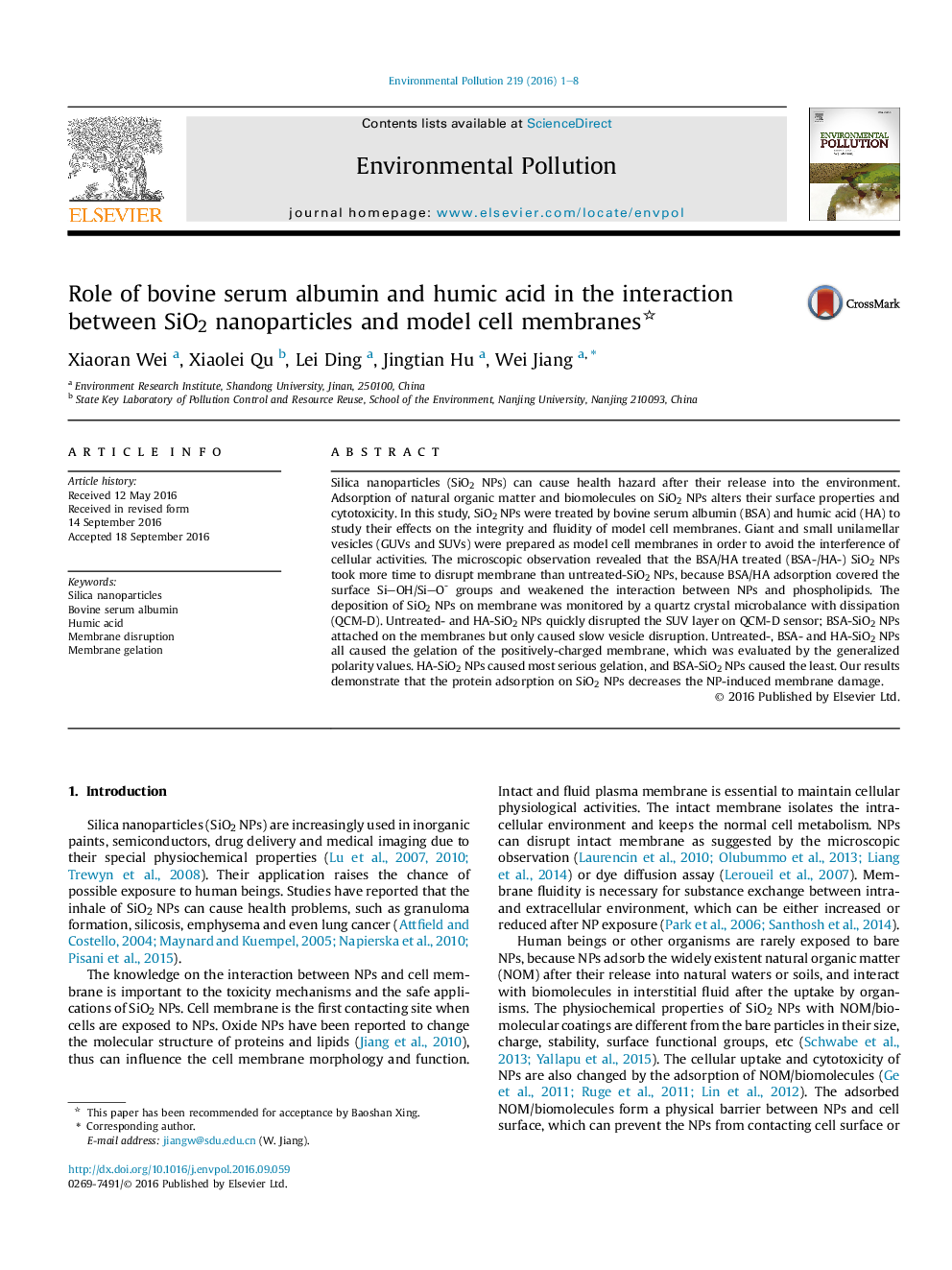| Article ID | Journal | Published Year | Pages | File Type |
|---|---|---|---|---|
| 4424236 | Environmental Pollution | 2016 | 8 Pages |
•BSA adsorption on SiO2 NPs mitigates the NP-induced membrane disruption.•BSA-treated SiO2 NPs cause least membrane gelation.•HA-treated SiO2 NPs cause most serious membrane gelation.
Silica nanoparticles (SiO2 NPs) can cause health hazard after their release into the environment. Adsorption of natural organic matter and biomolecules on SiO2 NPs alters their surface properties and cytotoxicity. In this study, SiO2 NPs were treated by bovine serum albumin (BSA) and humic acid (HA) to study their effects on the integrity and fluidity of model cell membranes. Giant and small unilamellar vesicles (GUVs and SUVs) were prepared as model cell membranes in order to avoid the interference of cellular activities. The microscopic observation revealed that the BSA/HA treated (BSA-/HA-) SiO2 NPs took more time to disrupt membrane than untreated-SiO2 NPs, because BSA/HA adsorption covered the surface SiOH/SiO- groups and weakened the interaction between NPs and phospholipids. The deposition of SiO2 NPs on membrane was monitored by a quartz crystal microbalance with dissipation (QCM-D). Untreated- and HA-SiO2 NPs quickly disrupted the SUV layer on QCM-D sensor; BSA-SiO2 NPs attached on the membranes but only caused slow vesicle disruption. Untreated-, BSA- and HA-SiO2 NPs all caused the gelation of the positively-charged membrane, which was evaluated by the generalized polarity values. HA-SiO2 NPs caused most serious gelation, and BSA-SiO2 NPs caused the least. Our results demonstrate that the protein adsorption on SiO2 NPs decreases the NP-induced membrane damage.
Graphical abstractFigure optionsDownload full-size imageDownload as PowerPoint slide
